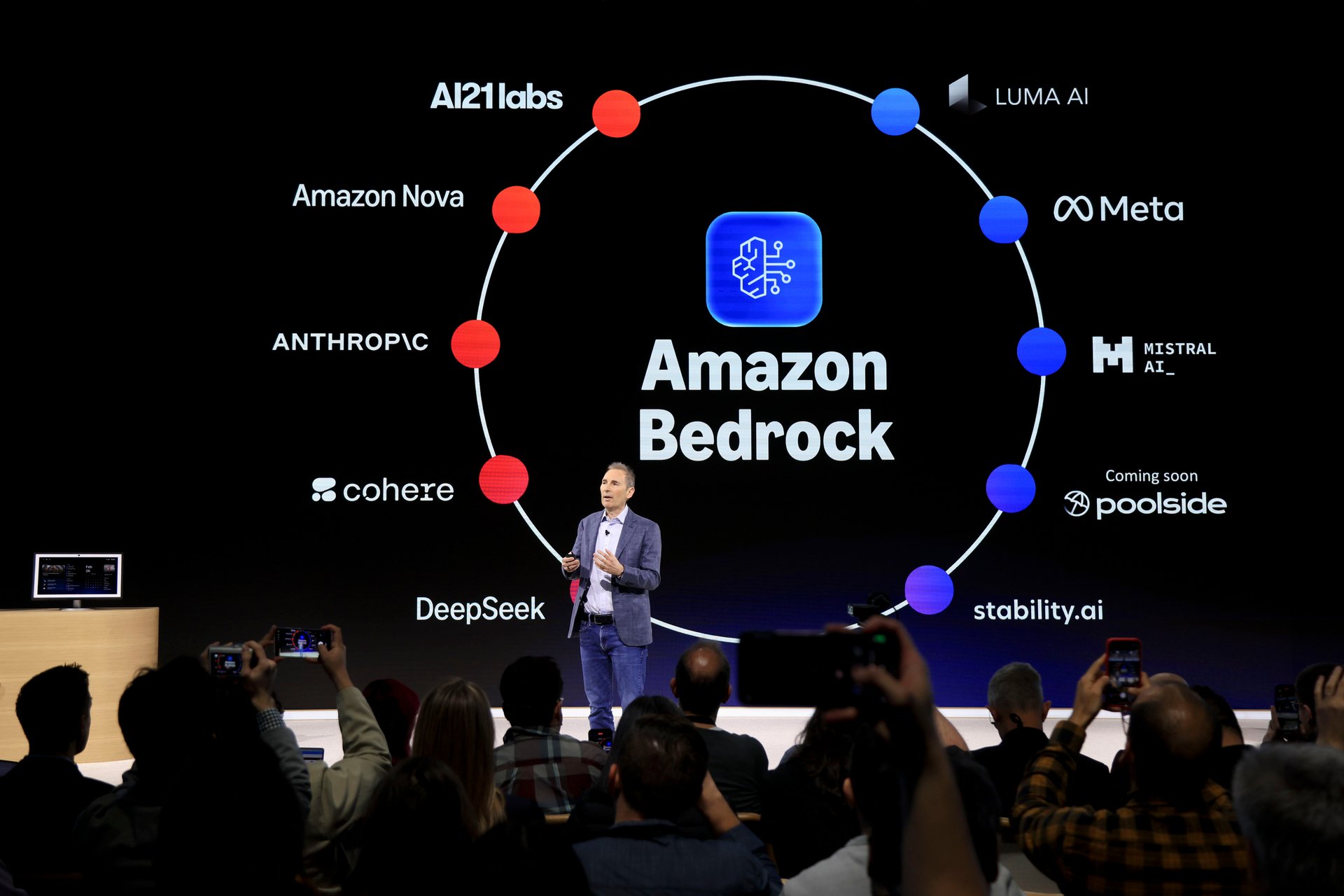AI means Amazon will need fewer white-collar workers over time, CEO says
Andy Jassy wrote in a company-wide memo that he expects AI to reduce Amazon's corporate workforce but increase its efficiency

Michael Nagle/Bloomberg via Getty Images
Amazon CEO Andy Jassy had a message for the company’s corporate workforce on Tuesday: The AI era is here — and while it’s going to make things faster and more efficient, it’s also going to mean fewer humans in the loop.
Suggested Reading
In a company-wide memo, Jassy said Amazon’s deepening investment in generative AI won’t just reinvent customer experiences — it will change the way the company operates internally. And, over time, that likely will mean fewer white-collar jobs.
Related Content
“As we roll out more Generative AI and agents, it should change the way our work is done,” Jassy wrote. “We will need fewer people doing some of the jobs that are being done today and more people doing other types of jobs. It’s hard to know exactly where this nets out over time, but in the next few years, we expect that this will reduce our total corporate workforce as we get efficiency gains from using AI extensively across the company.”
Under Jassy, Amazon has already shown that it’s not afraid to make cuts. Since late 2022, the company has laid off more than 27,000 employees, part of a wave of post-pandemic belt-tightening that has swept across Big Tech. Now, even as revenue bounces back and capital spending surges, a hiring rebound hasn’t followed — especially not for corporate roles.
Jassy’s comments suggest that’s by design. Even beyond the office, Amazon’s workforce is flattening: The company now deploys more than 750,000 robots across its fulfillment network, and its latest model, “Vulcan,” is designed to handle heavier loads once managed by human hands.
At the same time, Amazon is rapidly embedding AI across nearly every part of its operations. More than 1,000 generative AI tools are already live or in development. Alexa is being retooled as “Alexa+,” a smarter assistant that can take action rather than just respond to prompts. On the shopping side, new features such as “Lens” (visual search), “Buy for Me” (cross-site purchasing), and automated sizing recommendations are being rolled out. The company’s generative AI shopping assistant is, according to Jassy, being used by tens of millions of customers.
Under the hood, AI is driving Amazon’s fulfillment strategy: managing inventory, forecasting demand, and working on robot efficiency. Customer service chatbots are getting an AI overhaul, and product listings are increasingly auto-generated. But the real breakthrough, according to Jassy, is the emergence of AI “agents” — software assistants capable of scouring the web, writing code, finding anomalies, and even handling research.
“There will be billions of these agents, across every company and in every imaginable field,” he wrote. “There will also be agents that routinely do things for you outside of work, from shopping to travel to daily chores and tasks. Many of these agents have yet to be built, but make no mistake, they’re coming, and coming fast.”
But perhaps the most telling part of Jassy’s vision is in an “agentic” future — one where AI software agents will handle much of the legwork that once filled certain jobs. The CEO thinks research, summarization, anomaly detection, translation, coding, and more will soon be delegated to bots that get smarter over time, leaving humans to “focus less on rote work and more on thinking strategically.”
“Agents will allow us to start almost everything from a more advanced starting point,” he wrote, adding that they’ll “change the scope and speed at which we can innovate for customers.”
Jassy encouraged employees to “get more done with scrappier teams,” attend training sessions, and adopt an AI-first mindset. In his words, those who embrace AI and help Amazon build its future will be “well-positioned to have high impact and help us reinvent the company.”
Jassy has floated this ethos before.
In his April shareholder letter, the CEO urged Amazon to operate like the “world’s largest startup” — prioritizing speed, invention, and risk-taking over headcount and hierarchy. Tuesday’s memo sharpened that idea: In an AI-driven workplace, fewer people may be part of the equation.
Amazon is far from alone. Microsoft and Google have both leaned into AI while slowing hiring and cutting thousands of roles. Startups like Harvey and Adept are pitching AI agents as the future of office work. And Anthropic CEO Dario Amodei recently warned AI could wipe out 50% of entry-level jobs and drive unemployment up by as much as 20% within five years. Others, including Nvidia’s Jensen Huang and billionaire Paul Tudor Jones, have argued that the shift will improve job quality and create new kinds of work — but even they acknowledge it will require significant retraining and regulatory oversight.
For now, Amazon is moving fast, scaling AI across its business — and signaling that headcount growth is no longer a prerequisite for progress.
